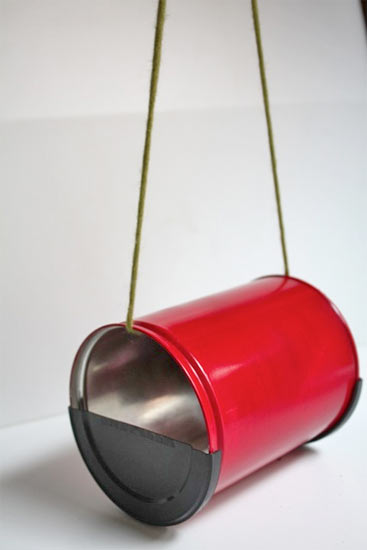| English: Cuckoo Lane Tree and Bird Feeder At least that looks what the tin on a tripod is for. (Photo credit: Wikipedia) |
| English: Red-headed Woodpecker (Melanerpes erythrocephalus). Canada Rondeau Provincial Park, Ontario, Canada. Image collected at the feeders behind the Visitor Centre. Français : Pic à tête rouge. Parc provincial Rondeau, Ontario, Canada. Cliché pris aux mangeoires situées derrière le centre d'accueuil des visiteurs. 日本語: ズアカキツツキ (Photo credit: Wikipedia) |

Many of us enjoy watching birds in our back yards. The amount of feeders available really allows us to draw very specific birds to our back yards. If you are just looking to start bird watching while you sip your morning coffee then you may want to start off by making your own bird feeder.
Making a bird feeder in the fall is a great way to start teaching your kids about birds in your area. It is a great family project to put together a bird feeder . It helps teach the kids and grandkids about caring for wildlife and recycling in you make a simple can feeder.
Sometimes the best feeders for birds are made from the simplest items. You can begin by using an empty coffee can. Clean the inside of the can and strip the label from the outside. At this point, you can choose to paint the can if you like, but leave the inside unpainted. Colors of red, yellow, and orange will attract some bird species. Other species may not care what color your bird feeder is, as they have no known color preferences. After the paint dries completely, find a hard plastic plate that will allow the can to fit nicely in its center.
Before attaching the can however, you will need to cut a few holes into it. The first hole should be at the top edge of the can. This will allow the food to spill out when the can is upside down. The next hole should be at the bottom of the can, in the center. This will allow you to fill the can with seed when it is turned upside down. After cutting the holes, turn the can upside down onto the middle of the plate and use super glue or a hot glue gun to glue the two together. There should be a rim of plate around the can to give the birds something to perch upon.
When you are finished, you will need to find a way to attach the feeder to your tree or other area. If the feeder is just sitting on a stump or a porch, then you can skip this step. If you want the feeder to hang from a tree, you will need a small chain and S hook. You can cut another hole in the can to loop the chain through and attach the S hook at the end of the chain. Then attach your feeder to the tree. If your feeder is really light weight, you can also use fishing line to attach it to the tree.
Be sure to clean out the feeder for the birds at least once every two weeks. This will allow the feeder to be fresh and appealing and keep the birds coming to your home. You can refill the feeder as needed. If you fill the feeder and attract no birds, you may want to change the type of seed you filled it with. Some birds prefer specific types of seeds, so you can try this to attract more birds. Just remember to have fun and enjoy the simple things in life that nature has to offer!
| English: Birds around a bird feeder made from a Coke bottle in Johannesburg, South Africa. From left to right, a male Southern Masked Weaver, a male Cape Sparrow, a female Cape Sparrows, and two male Cape Sparrows. It is midwinter, so the birds are in on-breeding plumage. (Photo credit: Wikipedia) |
Copied with permission from: http://plrplr.com/43556/how-to-make-interesting-can-feeders-for-birds/
















